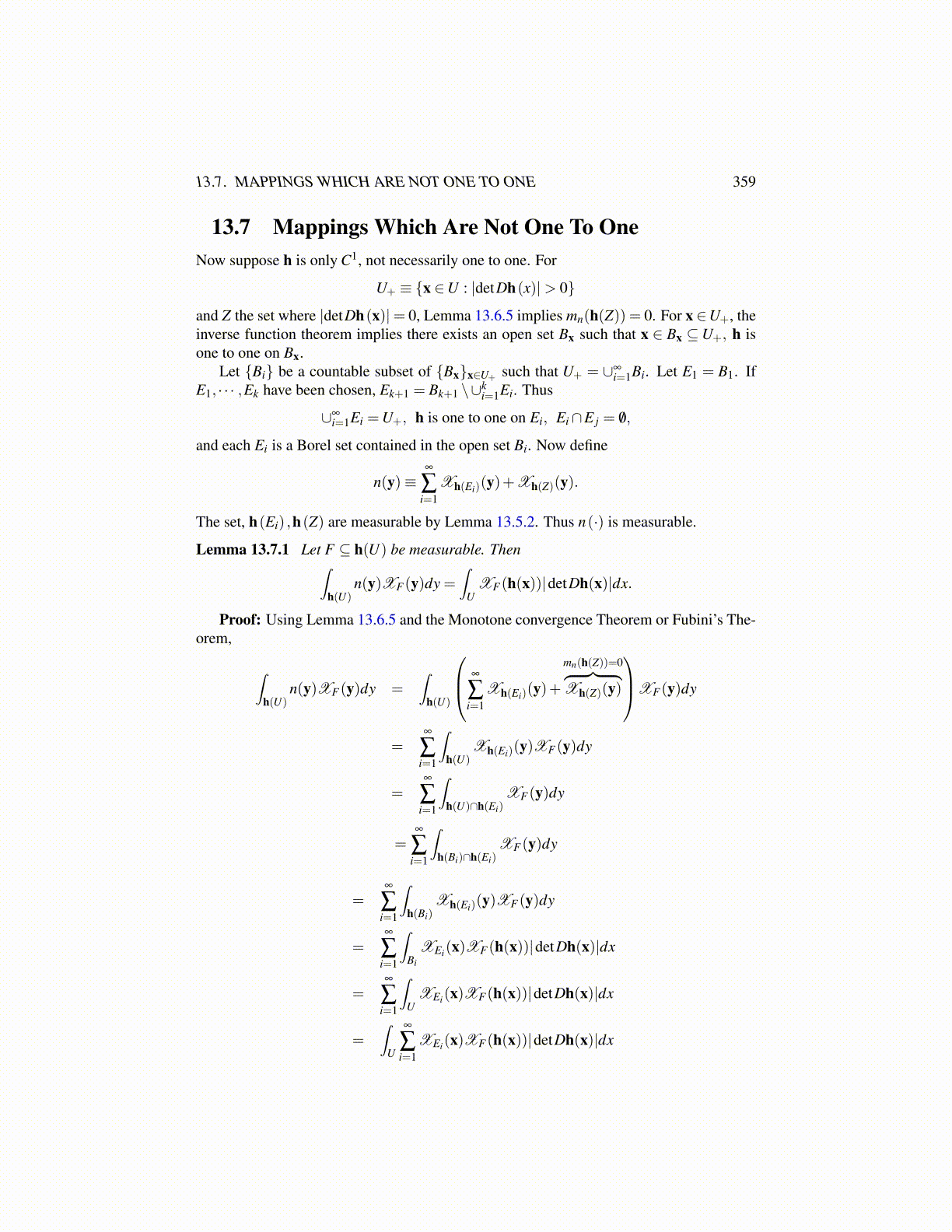
13.7. MAPPINGS WHICH ARE NOT ONE TO ONE 359
13.7 Mappings Which Are Not One To OneNow suppose h is only C1, not necessarily one to one. For
U+ ≡ {x ∈U : |detDh(x)|> 0}
and Z the set where |detDh(x)|= 0, Lemma 13.6.5 implies mn(h(Z)) = 0. For x ∈U+, theinverse function theorem implies there exists an open set Bx such that x ∈ Bx ⊆U+, h isone to one on Bx.
Let {Bi} be a countable subset of {Bx}x∈U+ such that U+ = ∪∞i=1Bi. Let E1 = B1. If
E1, · · · ,Ek have been chosen, Ek+1 = Bk+1 \∪ki=1Ei. Thus
∪∞i=1Ei =U+, h is one to one on Ei, Ei∩E j = /0,
and each Ei is a Borel set contained in the open set Bi. Now define
n(y)≡∞
∑i=1
Xh(Ei)(y)+Xh(Z)(y).
The set, h(Ei) ,h(Z) are measurable by Lemma 13.5.2. Thus n(·) is measurable.
Lemma 13.7.1 Let F ⊆ h(U) be measurable. Then∫h(U)
n(y)XF(y)dy =∫
UXF(h(x))|detDh(x)|dx.
Proof: Using Lemma 13.6.5 and the Monotone convergence Theorem or Fubini’s The-orem,
∫h(U)
n(y)XF(y)dy =∫
h(U)
∞
∑i=1
Xh(Ei)(y)+
mn(h(Z))=0︷ ︸︸ ︷Xh(Z)(y)
XF(y)dy
=∞
∑i=1
∫h(U)
Xh(Ei)(y)XF(y)dy
=∞
∑i=1
∫h(U)∩h(Ei)
XF(y)dy
=∞
∑i=1
∫h(Bi)∩h(Ei)
XF(y)dy
=∞
∑i=1
∫h(Bi)
Xh(Ei)(y)XF(y)dy
=∞
∑i=1
∫Bi
XEi(x)XF(h(x))|detDh(x)|dx
=∞
∑i=1
∫U
XEi(x)XF(h(x))|detDh(x)|dx
=∫
U
∞
∑i=1
XEi(x)XF(h(x))|detDh(x)|dx